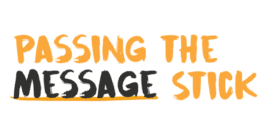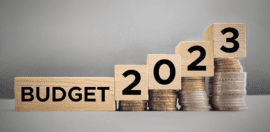We need to build movements not create more barriers…

22 November 2021 at 3:21 pm
The old adage that you catch more flies with honey than you do with vinegar is never more correct than in the era of growing “cancel” culture. Remember, movements are created with open arms, not closed views, writes Neil Pharaoh.
I like long form reading on the weekend, and this weekend past I got to dive into a great series of articles in the Sydney Morning Herald and The Age on what is now referred to as “cancel culture”. They are well worth a read, but it did get me thinking about the impact of this on movement building and causes.
To summarise a quite detailed proposition, the articles discuss whether cancel culture has “gone mad”, or whether it is the incidental cost of rebalancing biased power structures. In simple definition cancel culture is “the practice or tendency of engaging in mass cancelling as a way of expressing disapproval and exerting social pressure”. For those Faulty Towers fans, this is something currently close to heart as John Cleese has entered the fray with his upcoming television decision “Cancel Me”.
So what does this have to do with building movements? Movements which have been successful through time – particularly by groups who are not the majority – all share the ability to “bridge” with the majority and create allies and friends. I was the national co-chair of Rainbow Labor from 2007-2014, and learnt much about movements during that time.
Rainbow Labor has been one of the most successful legislative movements in the modern era, with over 220 pieces of legislation and regulations passed under Rudd and Gillard to create a world closer to equality for the LGBTQI+ community. While marriage equality took centre stage, the majority of other reforms arguably have a more substantive every day benefit to the community – think LGBTQI+ health, dad and parenting pay, superannuation equality, and so on.
One thing I did throughout my seven years as co-chair was meet with, talk to, and engage with people who disagreed with me. Rocking up to party branches in more conservative areas, meeting with workers and unions who didn’t always share the pro LGBTQI+ view they do today, and even doing work for organisations who writ large opposed everything I wanted, including some religious groups in Australia.
I knew my role, and that of the movement, was to create a bridge – the LGBTQI+ community at best is maybe 10 per cent of the population, we can never secure a majority by working only with ourselves. At its core, this is the basis of building a movement which is sustainable and long term – of all the reforms Rainbow Labor led through to 2014, only two or three have been unwound by the Liberal Nationals, the rest have remained, ingrained and “normalised” under Australian law.
Had I gone about my Rainbow Labor ways by “cancelling” the views of those I didn’t agree with, we would have never received consensus and an overwhelming majority vote for marriage equality, and we would have never assured the reforms stayed as law in Australia as well.
I once led an advocacy workshop for a group of very conservative religious leaders, and while I disagree with their view on some issues (and am an atheist myself), what we did agree on was issues like social justice, poverty alleviation, improved foreign aid – and that is the point. We didn’t agree on marriage equality, or LGBTQI+ rights, but we worked through what we had in common, not what pulled us apart.
At the end of the workshop, which was full with examples of my LGBTQI+ work, and with over half the attendees in a clerical collar, I spoke to the organiser. She said most of that room had never been able to find common ground with “radical gay views”, but that by accepting where we disagree, and focusing on our similarities, we bought a human side to the discussion. A year after the vote, I learnt that no one in that room actively campaigned on the “no” side – whatever their views beforehand, spending a day together despite our differences, moved most of them into “neutral” on the issue. This, in a paragraph, is what movement building is about.
Had I “cancelled” myself from working with this religious group, they wouldn’t have been exposed to our human similarities and joint passions, and I would have been another abstract “gay” activist, “bashing” their traditional views of marriage.
This takes me to the key point of today’s article: to build a movement you need more open hands and open hearts, than vitriolic chest beating. Democracy has always been the art of the possible, not the perfect. We need more bridges and less barriers with those who we disagree with. We also need to be able to have disagreements, debate and have discussion and not just loud fights and complaints about them on social media.
I have never once seen calling someone homophobic or racist change their mind – they do not get up and say “why thank you Neil, I had never realised I was homophobic or racist, and thanks to you telling me that, I am now going to change my mind” – it isn’t human nature.
Whether it is for this election, or your broader political and advocacy campaigning, if you genuinely want sustained change and to build support for your ideas, you must build inclusive movements, not insular communities with barriers.
About the author: Neil Pharaoh has spent most of his voluntary and professional life in and around social purpose organisations, government, public policy and advocacy. Neil has been behind many leading social policy and advocacy campaigns on gender rights, equality, medical research and education, and ran for Parliament in Victoria in 2014 and 2018. Neil is co-founder and Director of Tanck, which focuses on better engagement with government, and regularly runs workshops and advocacy sessions and advises leading social purpose organisations on their government engagement strategy and systems.
Happenings on the hill is a fortnightly column focusing on all things politics, policy, campaigns and advocacy. Stay tuned for updates around political trends and elections, lobbying and advocacy news, and hints, tips and ideas on government engagement that are specifically written for the social purpose/for purpose sector.
If you have any ideas, suggestions, tips or questions, please feel free to email Neil Pharaoh at neil@tanck.com.au or reach out to him via Tanck social media: @tanckconsulting on LinkedIn, Twitter, Facebook and Instagram.







